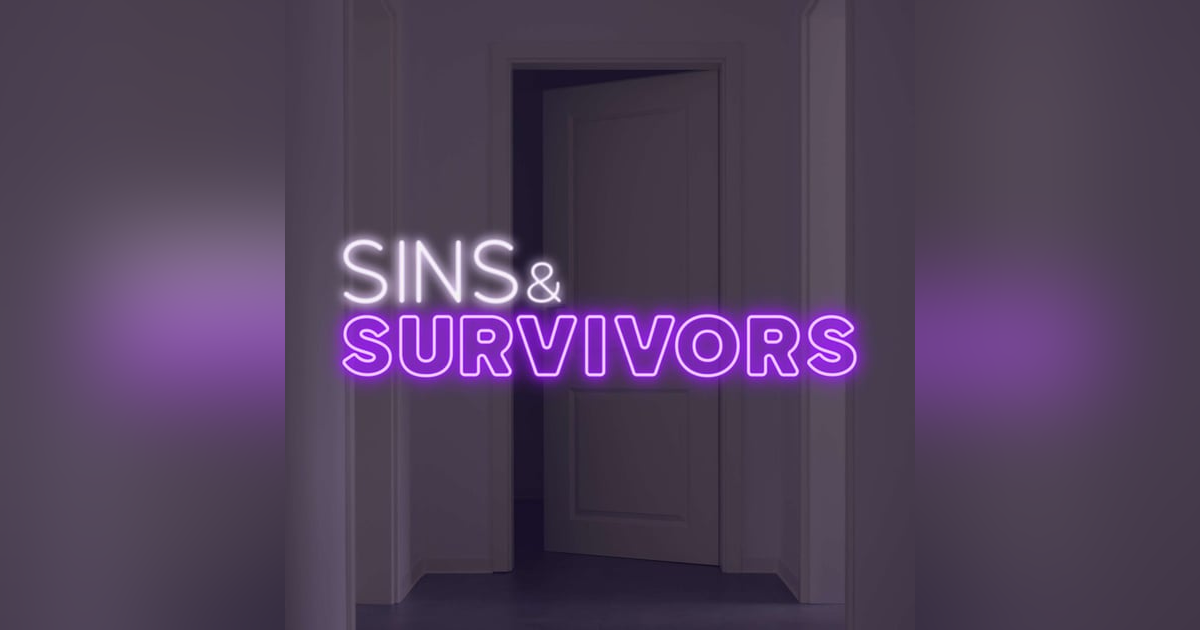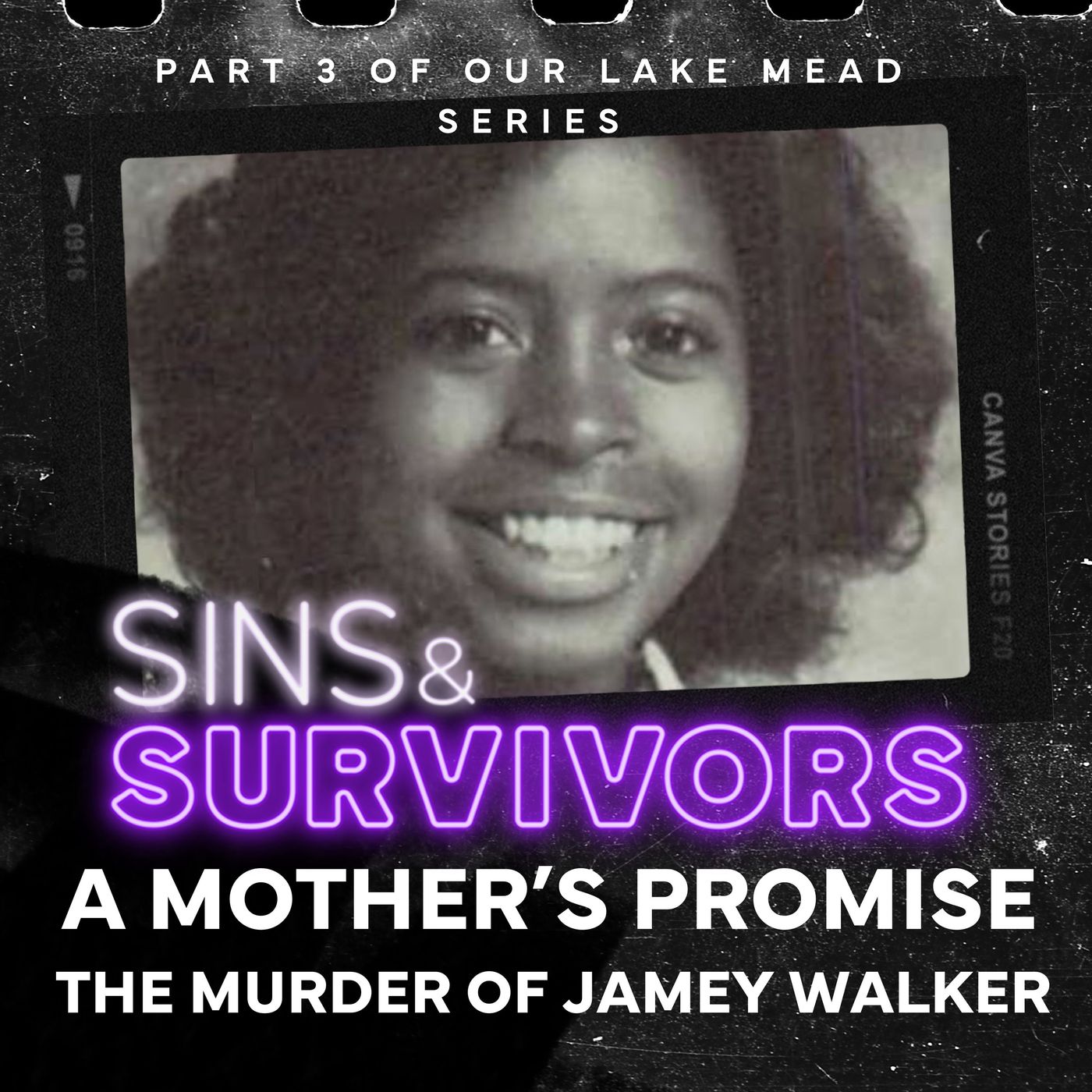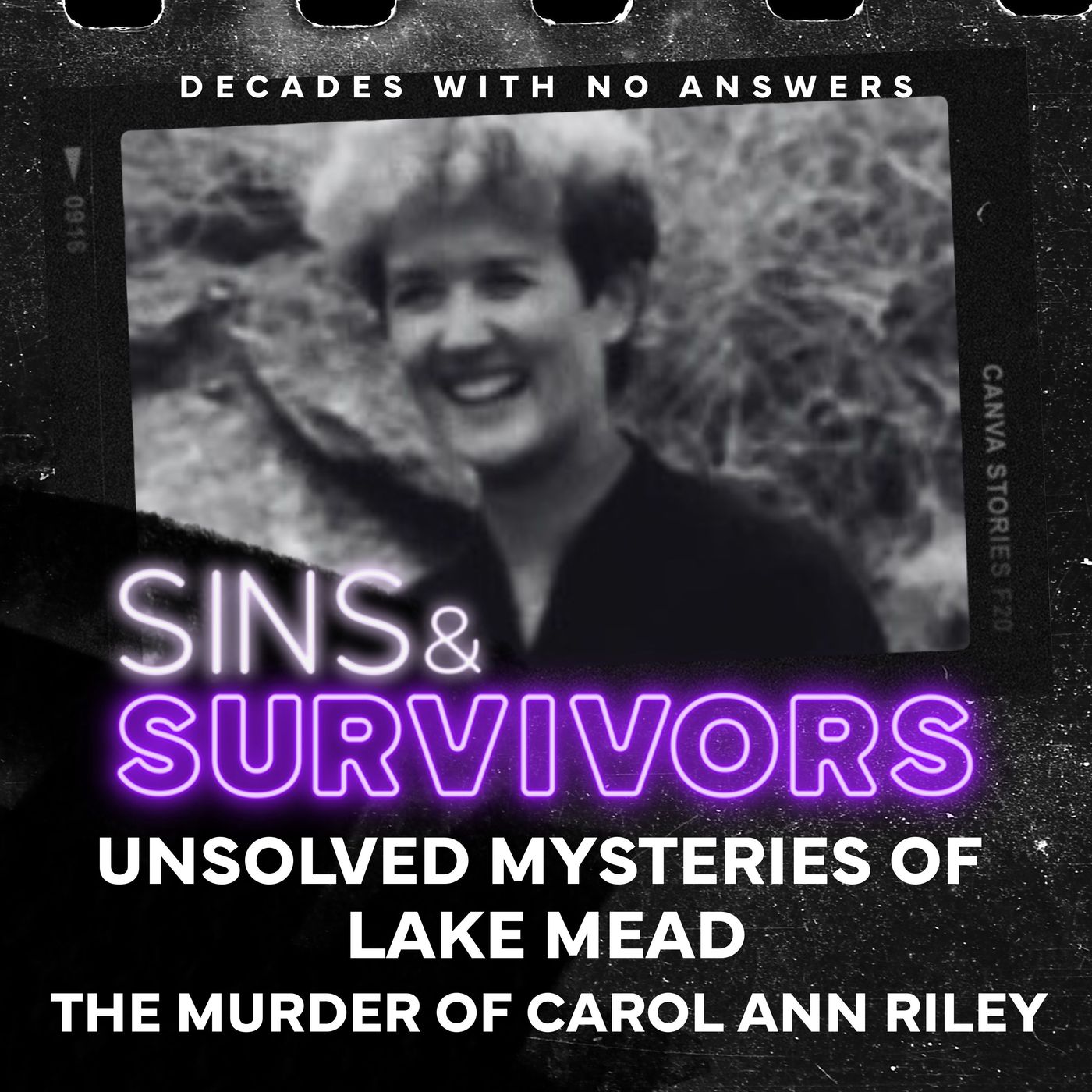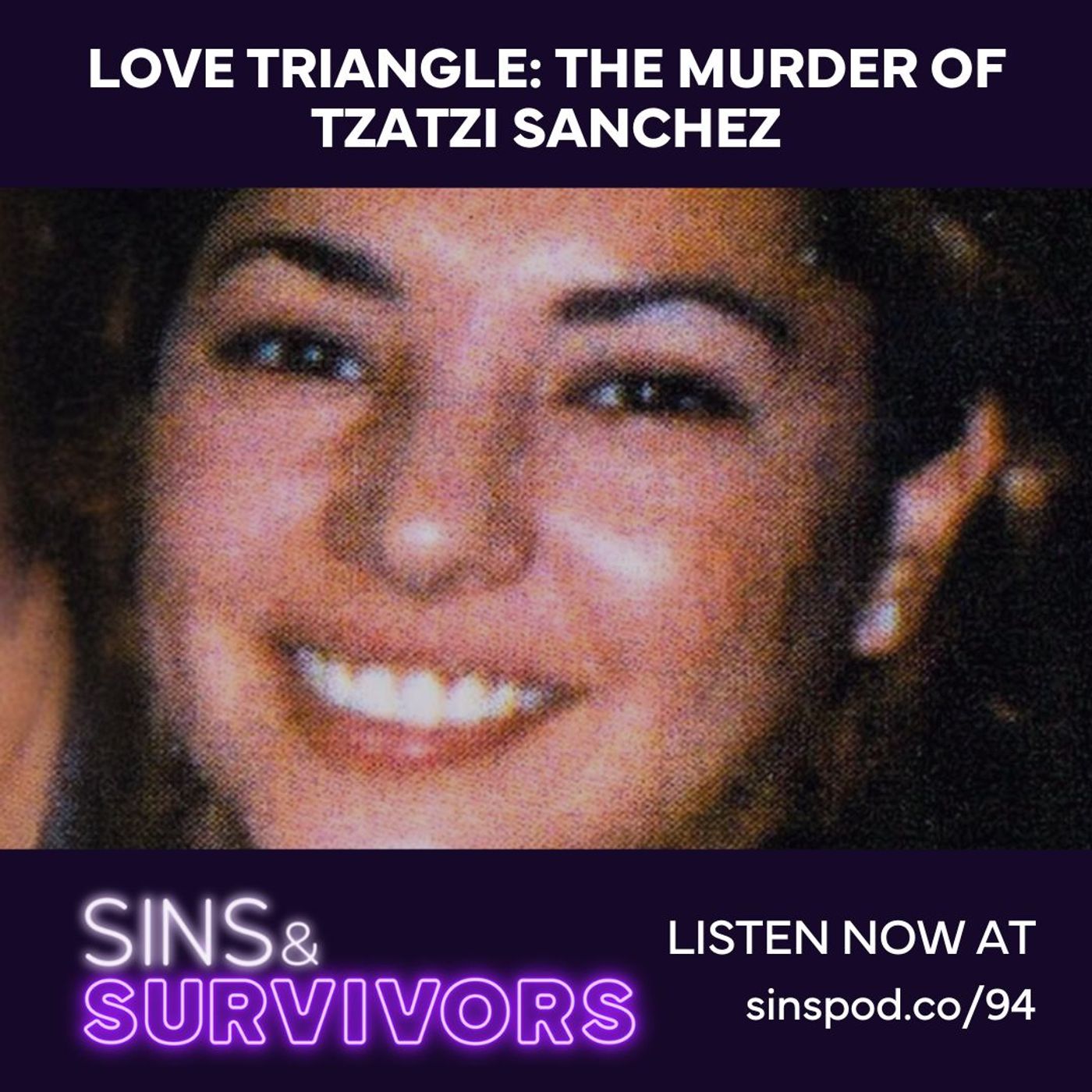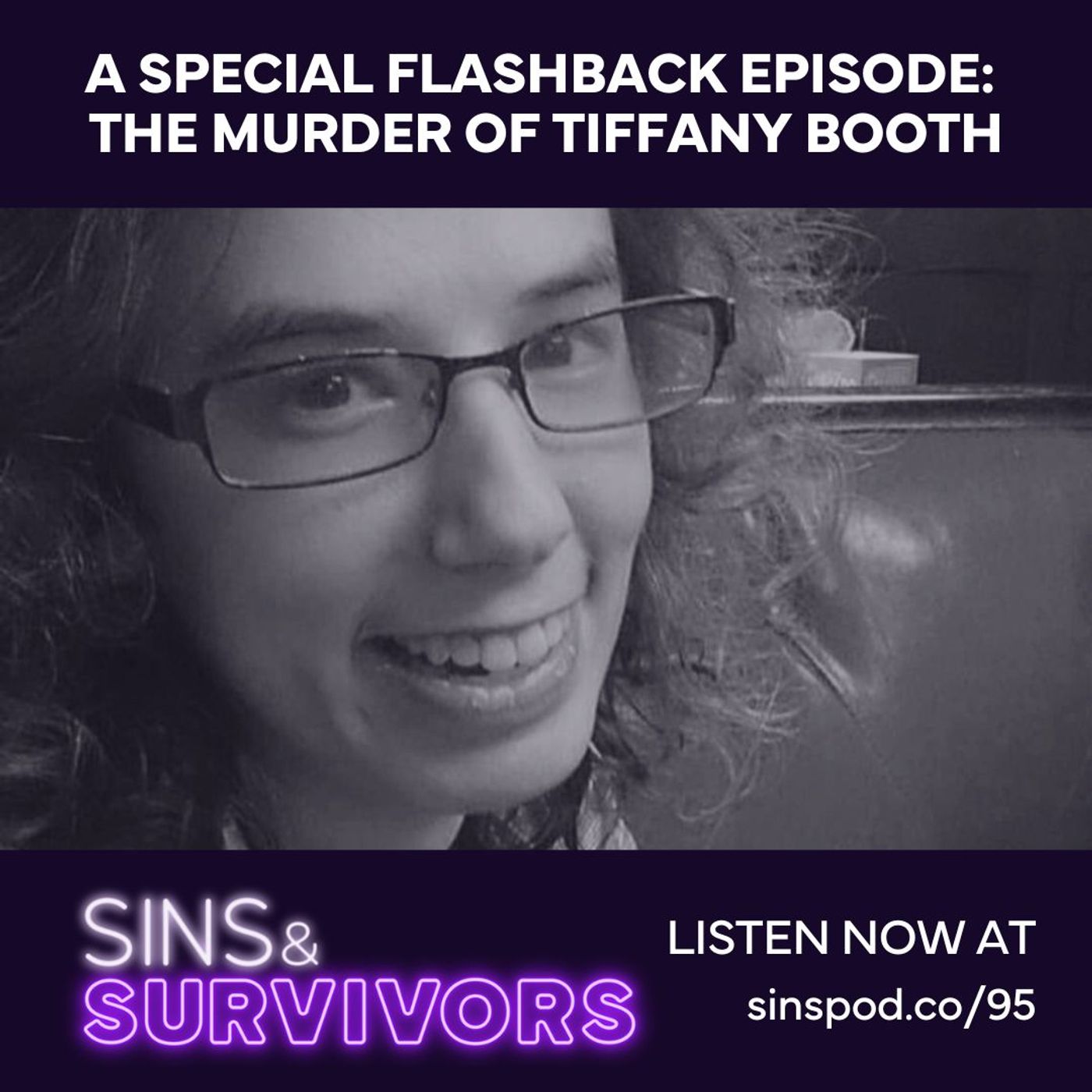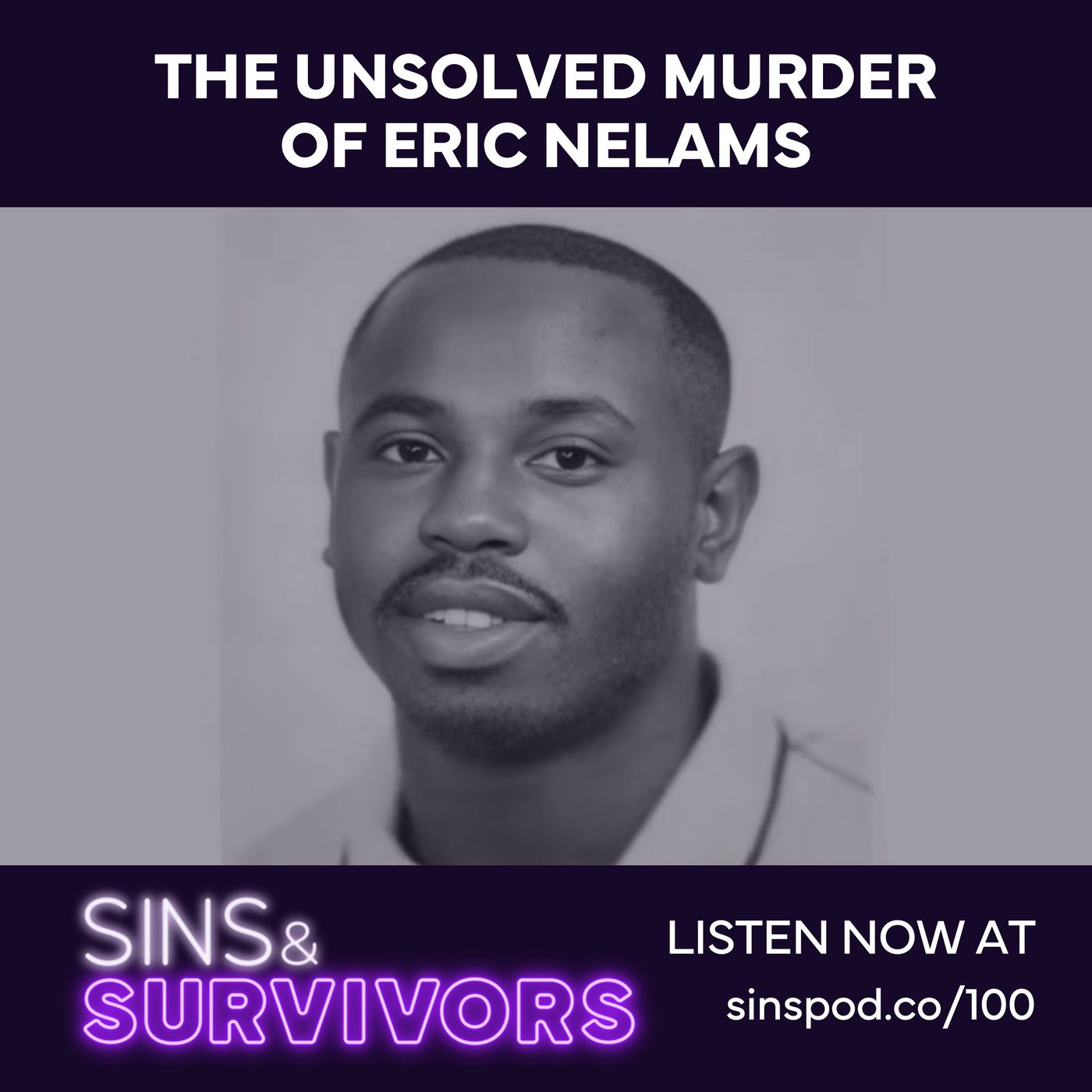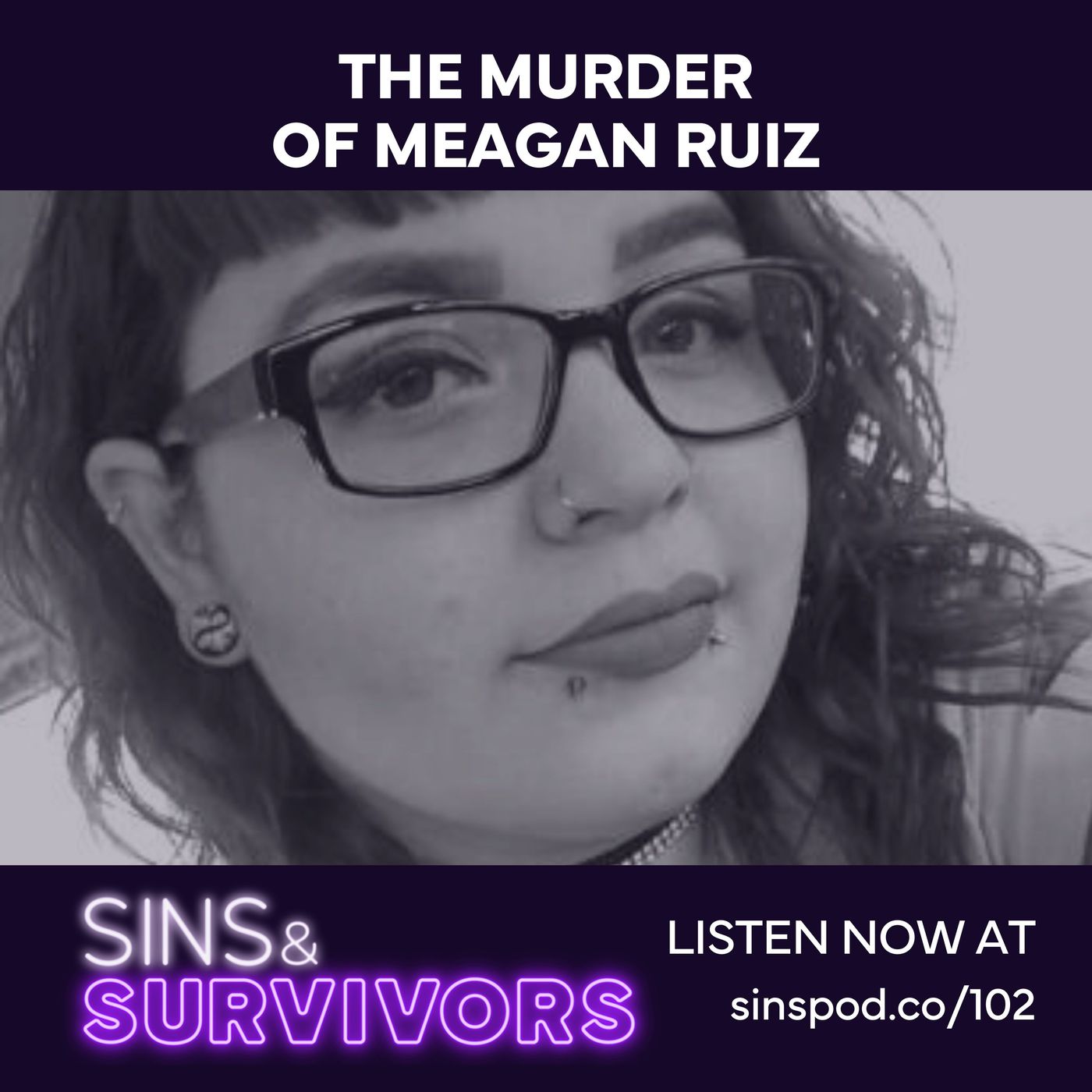A Mother's Promise - The Murder of Jamie Walker

Jamey Walker was a member of a well-known and beloved family on the west side, often called "West Side royalty". In this episode, we talk about the story of the West Side (It needs a much more detailed treatment; it's fascinating, inspiring, and heartbreaking).
Episode # 87 - A Mother's Promise - The Murder of Jamie Walker
[Shaun]
Jamey Walker was a member of one of the most beloved and consequential families ever to have lived on Las Vegas’s Historic West Side.
Her mother, her father, and her grandmother were all well-known and highly regarded, going back to the 1960s and earlier.
[John]
On Mother's Day 1981, a day when Jamey planned to spend time with her mom and grandmother, the unthinkable happened. She disappeared without a trace. Kidnapped. Gone.
Her panicked family did what they were told, but they couldn't prevent the unimaginable from happening to her.
(Music - Pause for 8 seconds)
[Shaun]
Hi, and welcome to Sins and Survivors, a Las Vegas true crime podcast that focuses on cases involving domestic violence, as well as missing persons and unsolved cases.
I’m your host, Shaun
[John]
And I’m your co-host, John
[Shaun]
We’re back this week with the third episode in our special series on the shocking number of crimes that have happened in and around the Lake Mead Recreational Area over the decades.
In the past two weeks, we’ve covered missing persons, unsolved crimes, likely mob murders, and one man who could possibly have faked his own disappearance.
Lake Mead, with its combination of lack of cell service, remote location, deep waters (most years, anyway), and hidden areas, remains the national park area associated with a surprisingly high homicide and disappearance rate… its not just life jackets we’re talking about here, but that has played a factor in more than a few deaths on the lake.
In this third and final episode, we’re going to cover one of the most infamous events that ever happened on Las Vegas’ Historic West Side.
In order to give a little context to the story, we’re going to talk a little bit about the Historic West Side, and the people who lived there, and continue to live there today.
There have been books written and documentaries made about the West Side, and it could easily support its own multi-season podcast, but for our purposes, we’ll stick to the basics.
[John]
The Historic West Side formed around 1911, the same year Las Vegas incorporated as a city. It was formed from the “McWilliams Townsite”, and it became known as “West Las Vegas” or just “the West side”
It grew steadily, but the population increased dramatically in the late 1920s during a resurgence of the Ku Klux Klan here in Nevada and nationally.
In 1923, the City of Las Vegas coerced African American business owners to leave downtown and move to West Las Vegas to “make way for population growth” and so they could “bring more businesses downtown”.
They even threatened not to renew their business licenses if they didnt leave… , so they had little choice but to move.
The West Side was cut off by the Clark Avenue Railroad (the railroad was the reason Las Vegas was formed in the first place, back in 1904), so they were figuratively and literally on the other side of the tracks.
The real growth on the west side began in the 1940s, because while black entertainers like Nat King Cole and Pearl Bailey were more than welcome to PERFORM on the strip, because of local regulations, they couldn't stay there overnight.
All those talented people would finish their shows, then head to the Westside to hang out, eat, and have what must have been epic jam sessions with other performers. Obviously it was the Strip's loss.
In the 50’s black owned clubs started opening that offered the same amenities you would find on the strip, and in 1955, the Moulin Rouge opened.. The first integrated hotel in the United States.
It was featured in Life Magazine a month later, but unfortunately, it closed within 6 months for a combination of reasons.
Strip casinos were desegregated in 1960 after the aptly named 1960 Moulin Rouge Agreement and that led to less foot traffic and revenue for the growing West Side Clubs and businesses.
In the 70’s and 80’s, there was a serious lack of reinvestment in things like infrastructure, which led to high unemployment, poverty, and crime.
[Shaun]
Historic buildings were destroyed and not replaced, and the construction of the I-15 cut the west side off further (many think, intentionally) from the rest of Las Vegas. Just like the railroad did originally
There are efforts to revitalize the area, and there have been, going back to around 2000, including the HUNDRED plan in 2016 (that’s the Historic Urban Neighborhood Design Redevelopment) plan
That plan has improved infrastructure, housing, established museum plans, and improved food access. We’re hopeful those improvements will continue and the Westside will continue to get the attention it deserves.
Sarann Knight Preddy and her family have been advocates of the west side and civil rights here in Las Vegas for decades. She and her husband opened a casino, which became the “People's Choice,” which would eventually be run by her son James Walker.
You can’t read about the Historic West Side without hearing about her family’s activism and contributions.
James Walker was married to Eleanor Knight, who was another crusader for civil rights. She was a past president of the local chapter of the NAACP, served on local civic boards, and owned her own insurance business.
That brings us to Eleanor and James Walker’s unsurprisingly amazing daughter Jamey, who was 18 years old and a 1981 graduate of Clark High School. She was described as being a “18-year-old Beauty Queen”, and it’s definitely accurate.
[John]
Jamey was the first black prom queen at Clark High, and according to her mom, her Prom King was Danny Tarkanian, son of the legendary UNLV basketball coach Jerry Tarkanian, who led UNLV to 17 conference championships
She was an honor student, she was on the school executive council, and she was the head cheerleader.
She was also very religious and took her faith very seriously.
In an interview, her mom told reporters a story about Jamey, which shows what kind of person she was. She said that Jamey would help “less popular kids” with things like fixing their makeup and hair.
She was also the leader of the NAACP youth, and in many respects a 3rd generation civil rights activist, very active in her community.
She and her family were referred to as “West Side Royalty” in many of the articles we read. Everyone who talked about her agreed she was a “great kid” and a “beautiful soul.”
[Shaun]
Another resident of the historic west side we need to talk about is Willie Lee Shannon, who, at 60 years old in 2010, was living with his mother in Ellington, Florida.
His neighbors thought he was just another resident, an average person who was teaching local kids about boxing, fixing bicycle chains, and going about his job as a landscaper.
They said he was a “nice guy” who was “helpful and charitable”. One neighbor told a story about how Shannon would borrow his lawnmower and bring it back full of gas.
Shannon was a Florida native who had a very troubled past. He was born in 1952, and grew up in Palmetto, Florida in a house with a large and complex living situation with 20 other children, the family situation that was a result of two divorces, and it wasn't ideal. It was clear he didn't get the attention someone needs growing up.
When he was 16 years old, according to police reports, he went out “joyriding” with a group of older boys. While they were at a gas station, they committed a spur-of-the-moment “smash and grab” robbery where they took $93 and a single pack of cigarettes.
All of the people involved were caught and prosecuted. In an in-depth interview with Shannon from 1981, he shared that at the time in Florida, the state was very interested in making examples of anyone committing even petty crimes.
[John]
Coming from a very poor family, Shannon didn't have money for bail or a lawyer, so he was held for three weeks before he was arraigned.
At one point in the trial, he was told he could be looking at 3 consecutive life sentences, which is insane given that no one died and the amount of money and items stolen was under $100.
In the end, he was given 15 years in prison, at age 16, and he ended up being paroled after 9. He served from 1967 until nearly 1977.
He talked in that interview about the horrific conditions in the prison, and of course, that type of sentence is pretty unlikely these days; it was a gross miscarriage of justice, a complete overreaction.
While in jail, though, he went from 135 pounds to over 185 pounds, and when he got out, as an ex-convict without an education, with limited career prospects, he got into Boxing.
He started fighting locally in Florida and in September of 1977 won his first professional fight in 4 rounds, and then went on to win his next 10 fights too, 9 of them by knockout.
He was fighting in the heavyweight division (over 200 pounds) even though he was only 185 pounds.. So he was knocking out opponents who outweighed him by up to 30 lbs.
In an interview, one time he was asked why he fought at heavyweight in Florida, and he answered, “Because they pay me more at heavyweight.”
In October of 1979, he moved to Las Vegas because, at the time, it was becoming the center of the boxing universe
[Shaun]
Willie Lee “The Cannon” Shannon came into the boxing scene at exactly the right time. The 70’s and 80’s are considered to be the golden age of boxing.
The 70’s were dominated by larger-than-life fighters (literally, most of the biggest names then were heavyweights) like Muhammad Ali, Joe Frazier, George Foreman, and Larry Holmes.
All of them had huge personalities and fought in giant global events like the 1971 “Fight of the Century”, the 1974 “Rumble in the Jungle” where Ali beat George Foreman, and the 1975 “Thrilla in Manilla”
Then in the 1980s, we saw the smaller welterweights becoming more popular.. People like Sugar Ray Leonard, Roberto Duran, Thomas “Hitman” Hearns, and Marvin Hagler.. These four often faced each other and were some of the biggest and most watched fights in boxing history.
At the time, the fights were shown on the 3 major networks, ABC, NBC, and CBS, and really became a part of the culture. People would watch them, then talk about them at work the next day around the water cooler.
The fighters were treated like rock stars, larger than life celebrities
[John]
Prior to the 1970s, the two major boxing centers were New York‘s Madison Square Garden and Los Angeles, but in the late 70’s and 80s Las Vegas started to become synonymous with boxing events. It was a combination of the lights, the glamor, the high drama, and the spectacle in Las Vegas at the time.
The marketing was crazy, and venues like Caesar’s palace courted promoters like Don King to get them to hold major events outdoors at their pavilion.
Of course, they wanted that because big fights meant WHALES, the largest high rollers, who would visit and spend a lot of money during the events.
The Nevada Gaming Commission also worked with the promoters, making fights easy to stage, and of course, with gambling being legal here in Nevada, it was a natural fit.
Some of the highest profile fights ever took place here, Ali vs Holmes in 1980, Sugar Ray vs Hearns in 1981, Hagler vs Hearns in 85, and later of course in the later 80’s we got Mike Tyson, who still lives in Las vegas, and in fact, goes to my gym. I see him a lot there, and it's never not surreal.
Even 40 years later, the celebrity persists.
So this was the boxing world, and at the time, Willie Shannon wanted in on it. He had the talent and the 14-0-1 record with 11 knockouts, so he came to Las Vegas to fight.
He won the cruiserweight title in 1979 (just a note that cruiserweight sort of bridges the gap between light heavyweight (175 pounds) and heavyweight (200 pounds).
It really seemed like he had it made in 1981 and was on a great track
[Shaun]
Jamey Walker was on a very different, but very promising track, too. With her activism, her popularity, her intelligence, and her empathy, her family and community knew she was destined for great things. She was headed off to college at UNLV, ready to take on the world.
All of that came to a screeching halt on May 9th, 1981, the day before Mother’s Day, when Jamey was kidnapped right out of the home she shared with her mother, Eleanor.
Eleanor and James, her parents, weren't together anymore at the time and were living their own full lives. Eleanor had a new boyfriend named Lusby Marshall, who went by Pep, and her dad, James, was running the “People’s Choice” club (later the People’s Choice Casino).
Of course, they were all well-known and pillars of the Historic West Side Community, which had slowed down, of course, after desegregation, but was still vibrant.
Jamey came home after a date late on Friday, May 8th, 1981, and was kidnapped early in the morning of May 9th. The circumstances were confusing,
The back door to her home was ajar when her mother came home, and her shoes were still there. There was no sign of forced entry, which made it seem like she might have known whoever it was who kidnapped her.. Letting them in. There was evidence of a struggle, though.
[John]
After Jamey was kidnapped.. The ransom calls began, three in all. James Walker got the first call in the early morning while he was working at the People’s Choice. He described the caller as African American, and he was told, “I got your daughter”.
They demanded $75,000 for her safe return. To confirm they had her, they let Jamey talk to her dad.. She said, “Daddy, they are not kidding”. The kidnappers told him not to call the police, and they’d know if he did because he was being watched.
In the second call, he heard the voice of a second kidnapper, also African American. This one pressed him on the $75000 ransom.
When James told him it wasn't easy to just get $75,000 cash because the banks are closed on the weekends, he suggested that maybe he should “sell his Mercedes.”.. Some sources we read said that the second caller also suggested that he ask Eleanor’s boyfriend Pep for the money.
In the third and final call, hours later, he was able to talk to Jamey and confirm she wasn't hurt. This call got a little weird, though. This time, the kidnapper told him that there had been a mistake.
He said that they “got the wrong girl” and that they intended to kidnap Eleanor’s boyfriend, Pep, because he “burned someone on a drug deal”. After that, the caller promised that Jamey would be released safely the next day.
[Shaun]
The family followed the instructions and didn't call the police, but Eleanor did call a friend of hers who worked in the DA’s office, who DID call the police, which prompted them to start looking for her, though they didn't start searching until about 10 hours after they were informed.
Almost immediately, they determined that there were likely several people involved just based on the number of voices James had heard in the ransom calls.
The next day, May 10th, in the early morning, 3 US Marine Corps sergeants were on military exercises in the Lake Mead Recreational Area, about 30 minutes from where the Walkers lived. They discovered the body of a young woman about 47 feet under a bridge over a wash on North Shore Road. They called Las Vegas Metro, telling them they thought she might be around 20 years old.
Tragically, it turned out to be Jamey. She’d only been missing less than 30 hours, and it seemed like she had been thrown off the bridge. Her cause of death was a massive skull fracture on the rocks below.
She’s been raped and murdered. There was some speculation that she was trying to escape her kidnappers when she was murdered, but that was never proven.
One of the first reporters on the scene was George Knapp. It was his first day on the job with News Channel 8, and the first murder he had ever seen. It stuck with him his whole career, and he’s reported on it many times over the years.
Given who was involved and the family’s high profile, it was huge news.
[John]
Initially, the police took some criticism that they didn't take any action until 10 hours after they were informed Jamey was missing, and there was some speculation that they delayed because of persistent but absolutely unproven rumors that the Walker family was involved with drug trafficking
In this case, as it turned out, the criticism of Metro wasn't warranted. They interviewed up to 55 potential suspects, held dozens of lineups, and ordered polygraph exams.
Not only that, but importantly, they preserved evidence from Jamey’s sexual assault, and I'm sure you realize by now if you listen often, that will be important a bit later.
It wasn't only Metro that was investigating, though. Eleanor was as well. She was absolutely relentless, supplying Metro with many of the tips they acted on. She had dozens of pages of single-spaced typed notes with descriptions of people who could potentially be involved.
Right at the top of Eleanor’s list was, in her words, “a boxer that lives nearby” named Willie Lee “The Cannon” Shannon. Eleanor explained that Shannon had met Jamey through Jamey’s brother James who was taking boxing lessons from Shannon, and that when they met, Shannon flirted with Jamey.
Keep in mind that in 1981, Shannon was 29, and Jamey was 18. Jamey wasn't having it, though. She didn't like Shannon and didn't keep that a secret.
The first time Eleaor met Shannon, it was at the People's Choice club, and she got a weird vibe from him too. Shannon apparently warned her that it was “dangerous for two women to live alone,” and he told her that he “was always looking out for Jamey because there are a lot of weirdos around.”
On the very day of the kidnapping, Shannon reportedly came to Eleanor and Jamey’s house to sign some insurance papers but acted very strangely, just getting up and leaving, saying that he had “an errand to run.”
[Shaun]
As we mentioned earlier, 1981 was when Jamey was murdered, and also when Shannon’s career hit the skids and never recovered. A Month after Jamey was murdered, and just after that article was written about him in Boxing Today, he defended his welterweight title against a fighter he should have beaten easily, but he barely won in a 9-round decision.
In his next fight two months later, Shannon was beaten so badly by Marvin Camel, the WBC Cruiserweight Champion, that he had to be rescued from “a pummeling” in the 3rd round of the fight, and he lost his title.
In October of 1983, the next time he was scheduled to fight, he didn't show up for the weight in.. because he had been arrested, but not for what you might think, but it’s going to sound familiar.
He was arrested for kidnapping and battery of a woman he was dating, and in 1985, he was sentenced to 30 years in prison for the crime. He ended up serving 13 years and was paroled (again) in 1998
While Shannon was in prison between 1986 and 1987, he allegedly had several conversations with another inmate named James Philips, where Shannon allegedly admitted to Philips that he had killed Jamey Walker.
He also repeated the allegations about the Walkers being involved in the drug trade and claimed that he gave James Walker some heroin to sell, but Walker had burned him, keeping either the drugs, the money, or both. Of course, the Walker family denies any involvement in this, and there is no proof of that.
It does seem to be consistent with Shannon being involved, though, given the allegations that the kidnappers made about someone being “burned on a drug deal”, so it does seem like Shannon did consistently claim this.
Philips later recanted this whole story, and because there wasn't enough corroborating or physical evidence, no charges were brought..
[John]
After he was paroled in 1998 at age 46, he headed back to Florida, again, where he kept his head down for 12 years until 2010, being a good neighbor and keeping out of trouble.
The problem for him was that Metro had done a good job or preserving the evidence from Jamey’s rape and murder, and there is no statute of limitations on murder.
They had suspected him from the beginning for many reasons, and he was right there at the top of the file, and they were just waiting for the break in the case that meant they could get him.
In 2006, the cold case detectives paid Willie Shannon another visit in Florida. Another DNA test had been performed that was a PARTIAL match with Shannon (due to degradation and the state of DNA analysis in 2006).
The detectives said he was “uncooperative” (which isn't shocking) and they came away saying, “He thinks he's gotten away with it.” The detectives had seen DNA technology steadily advance.. So they knew their time would come..
In 2010, they got their big break in the form of a $500,000 grant to revisit cold cases where DNA was available, having them analyzed using the newest cutting-edge DNA analysis technology.. Again, they submitted the DNA for analysis and got a much better match
Metro decided that it was time, and that they could make the case… If they could get a fresh sample to match what was left of the original 1981 evidence.
The cold case detectives decided to make the trip to Florida with the goal of getting that fresh sample of Shannon’s DNA to help make the case airtight..
Initially, it did NOT go well.. There was an incident where Shannon's parole officer tipped him off by mistake that the police were going to be trying to get a sample of his DNA, but they finally succeeded in getting it
On November 3rd, 2010, they got a conclusive match, and on December 7th, 2010 Shannon was arrested for the kidnapping, rape and murder of Jamey Walker while he was on a job site in Palmetto, Florida.
He was held in a Manatee County jail while he awaited extradition to Nevada, and finally made it to Nevada State Prison, where he would stay for the next 5 years awaiting trial.
This trial itself was surprisingly quick. In January 2016, Shannon was offered an Alford plea, which means that he didn't admit to the crime, but he did acknowledge that the prosecution had enough evidence to get a conviction if the trial were to proceed.
Another tragic aspect of the case is about Jamey’s mom, Eleanor. She was a tireless voice for her daughter right from the beginning, feeding Metro tips and information, working with them, and keeping in touch with the cold case detectives for over 30 years. She wanted so much to see her daughter’s murderer brought to justice..
She was relieved when Shannon was finally apprehended, but endured 5 years of waiting for justice to be served to him, and sadly, on the very day when Eleanor was to be deposed in the case, she passed away.
Shannon's sentencing was on March 10th, 2016, before Jamey’s friends and family. Dozens of them showed up for Jamey wearing “Justice 4 Jamey” t-shirts, showing how beloved she was.
Her aunt, her uncle, and her cousin all gave heartbreaking impact statements and said that although they believed it was their Christian duty to forgive Shannon but that, “they were still working on it”
Shannon was sentenced to 15 years in prison, but because his plea fell under the law at the time Jamey was murdered, he was eligible for parole almost immediately after the sentencing.
He applied for parole in 2017 and was denied, but he was set free a few months later. He ended up serving only 5 months in jail after being sentenced for Jameys kidnapping, rape and murder, only 5 years total.
[Shaun]
In an interview, Jamey’s cousin Gayla Walker Thorton talked about the lifelong impact that the murder has had on her and the Walker family. She said that, of course, Mother's Day has always been a hard time for the family after what happened. Currently, Gayla is a school counselor in Las Vegas and has a daughter named Jamey.
The Walker family believes, just like Metro Police do, that there are still people out there who were involved with Jamey’s murder, and she wants them brought to justice.
Tolanda Walker, Jamey’s aunt, specifically said that the family believed they know who one or more of the accomplices could be.
On the ransom calls, James heard three voices. Two men and a woman. At the scene, they didn't find Shannon's fingerprints. They did find two other sets of fingerprints they couldn't identify.
This case leads us to wonder if justice was served for Jamey and her family. A young woman was kidnapped raped and murdered, and while one of the perpetrators was eventually caught, he was given only 15 years, and served only 5 years, which might be the shortest sentence for a murder in any case we’ve covered.
Its not clear why he was offered an Alford plea, given that the DA had more than enough evidence to get a murder conviction, which would have resulted in a more appropriate sentence, especially given Shannon’s previous violent crimes against women. Somehow, this man remains at large in Florida to this day.
Jamey is buried here in Las Vegas at the downtown Palm Mortuary.
If you have any information regarding the other people responsible for this horrific crime, please reach out to Crimestoppers at 702 385-5555 where you can remain anonymous, or to the Metro police cold case division at 702-828-8973 or you can email them at ColdCaseHomicide@lvmpd.com We also have a link to Metro’s cold case website at sinspod.co/metrocoldcase
Thanks for listening, and please take a moment to review the podcast if you’re enjoying it. It really helps us get these important stories out to a wider audience. We appreciate it, and we remind you that what happens here happens everywhere.
